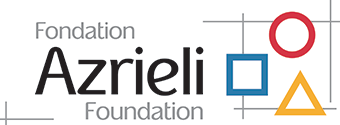When talking about teaching music to students with exceptionalities, two themes keep coming up: first, structure and routine are important. And second, to foster engagement, let the student lead. These can seem like conflicting ideals—how do you maintain your lesson structure and let the student lead at the same time? What if the student leads you away from the structure—what then? It is a tricky balance, but there is a way to make it work!
Let’s look at why structure and student-led learning are important principles in special music education. Many students with exceptionalities, especially autistic students, thrive on structure and routine. It can feel safe and grounding in a world that can be overwhelming. This can reduce anxiety and allow for better self-regulation, both of which not only improve wellbeing, but also lead to better learning outcomes. For some students this may mean simply keeping the same general lesson routine every week (for example, starting with a warmup, doing a few repertoire pieces, and ending with some theory work or creativity activities). For others, the routine may need to be very well-defined, with the same activities happening in the same way (the same hello and goodbye song every week, maybe the same warmup, and the same types of theory work or creativity activities, all in the same order). Some may benefit from a visual schedule, but for most this isn’t necessary—they’ll learn the flow of the lesson and come to rely on it.
Student-led learning is an important approach for students who may have difficulty engaging unless they’re invested in the activity. This is especially common for students with ADHD, or others who struggle with focus and attention. They can’t necessarily force themselves to follow through with a task that is not inherently interesting to them, and so as teachers we need to find what sparks their interest. A great way to ensure that the student will be interested in the material is to follow where they lead. For example, if you’re teaching a new chord progression and the student starts improvising different patterns, go with it! Or if you were planning to start a new repertoire piece and the student starts trying to pick out music from a favourite video game, that may be a source of motivation and something to explore.
So the big question is how do you incorporate both strategies at the same time? An important caveat is that student-led learning does NOT mean that you need to follow the student’s lead at all times. It means that determining the curriculum and approach is a collaborative process where the teacher adjusts based on the student’s needs and interests. However, if you have a student who is demonstrating that they have sensory needs that must be met in the moment, or that they’re getting maxed out and need a break, it is definitely important to pay attention rather than to push through with what was planned. Most times, this can be incorporated into your structure. Let’s say you’re about to do a rhythm reading activity in which the student would typically clap the rhythm, but they’re wandering around the studio and seem to have a hard time sitting and focusing. It doesn’t mean you need to abandon the plan and wander with them—it means you need to incorporate the movement they seem to need into the activity. You could use body percussion or marching rather than sitting and clapping, for example. It can also mean that you plan ahead to incorporate elements that interest your student. If every time you try to teach a piece from the method book your student’s attention wanders and they start improvising instead, structure more of your lesson around improvisation.
It’s important to remember that students do thrive on structure, so it’s best not to abandon that structure in the moment. Instead, plan your structure around the interests and needs of the student, and develop a structure that is flexible enough that you can follow as needed. It’s always a good idea to have creative variations on your planned activities in your back pocket so that you can pull them out as needed to keep things on track. It is a delicate balance, but finding the right one for each of your students will lead to productive and engaging lessons.
Happy teaching!



